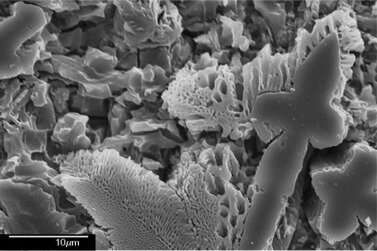Credit: Asociacion RUVID
A new glass ceramic material could become a better alternative to use in construction. Miguel Hernández University (UMH) professor Manuel Jordán has contributed to the creation of a new glass ceramic material from sludge contaminated with toxic chromium. This new material has high resistance to bending compared to others of the same class, and once processed, is nontoxic and environmentally harmless.
The new glass ceramic material is 75 percent composed of sludge with high levels of hexavalent chromium Cr (VI), a toxic form of chromium that comes from industrial processes such as the manufacturing of stainless steel or curing leather. This chemical substance is highly soluble and its consumption has been linked to risks of cancer and allergies. The researchers obtained sludge from the industrial area of Tultitlán (Mexico), which is close to urban centres. In order to change its chemical properties, the sludge was mixed with feldspar and distilled coal ashes (coke), and was then cooked in an oven at 1,450 degrees. With this process, the researchers have been able to turn toxic chromium Cr (VI) into a different chemical substance, Cr (III), low quantities of which are essential in our diet. Furthermore, the new compound has been immobilised, which means it does not affect the environment.
In addition to being chemically stable, the new material's mechanical resistance to bending (258 mega pascals) is quite high compared to other traditional glass ceramic materials. The results make it possible to conclude that the glass ceramic process could become a real and useful alternative for the recycling of toxic and dangerous industrial waste, which could be turned into new materials that provide another, potentially better option, for architecture and the construction of buildings and varied public works including pavement, coatings, tiles and roofs.
The new material and its mechanical properties are detailed in Material Letters X. The project is based on the preliminary results of the doctoral thesis of Beatriz Rincón, who won the Extraordinary Doctorate Prize in 2018, and which was defended at the UMH under the guidance of professor Jordán.
More information: S. Ballesteros et al. Vitrification of a sodium chromate waste and mechanical properties of a final glass-ceramic, Materials Letters: X (2019). DOI: 10.1016/j.mlblux.2019.100025
Provided by Asociacion RUVID






















